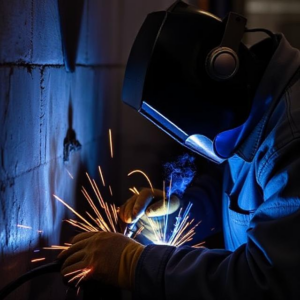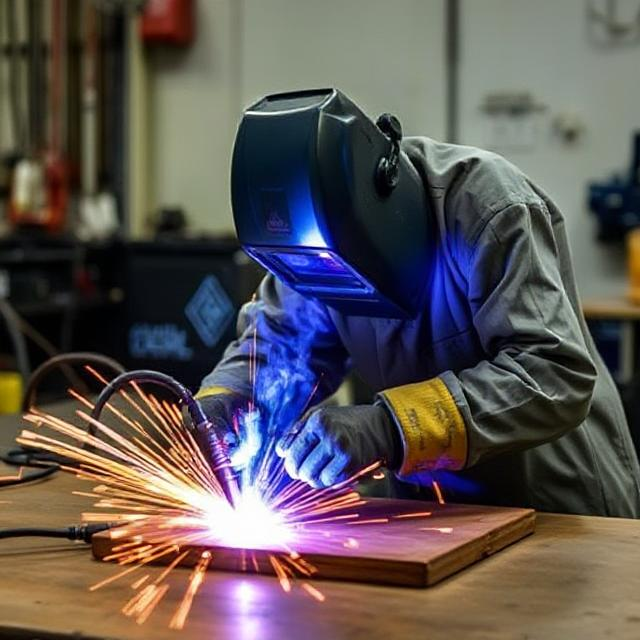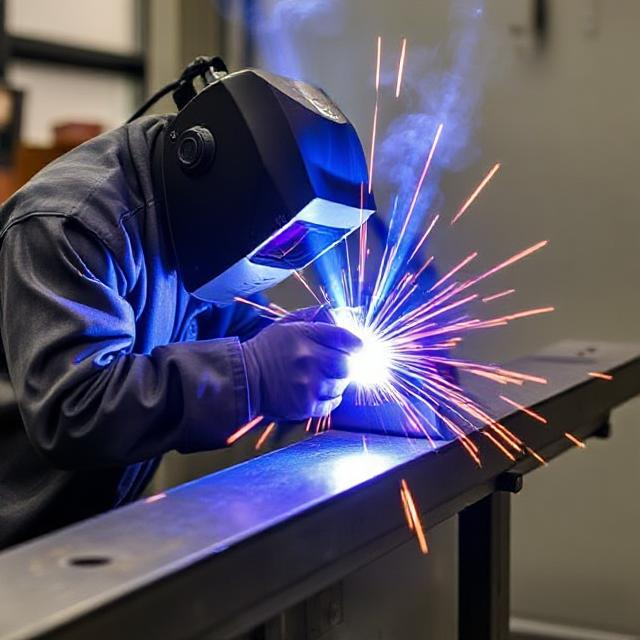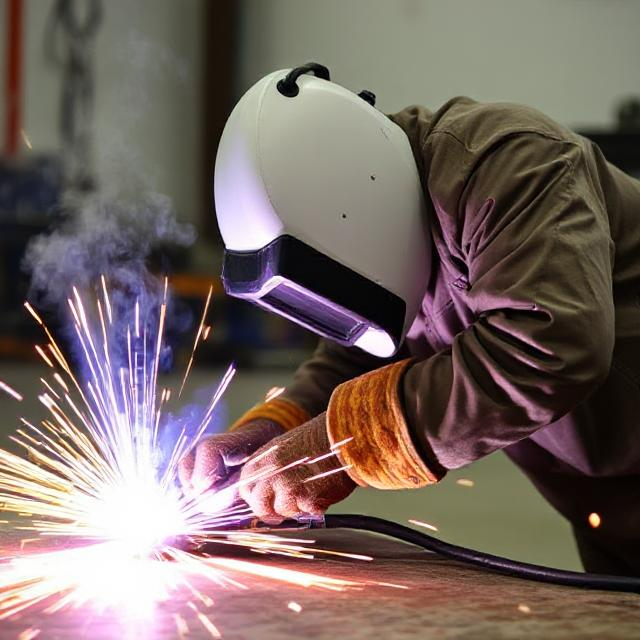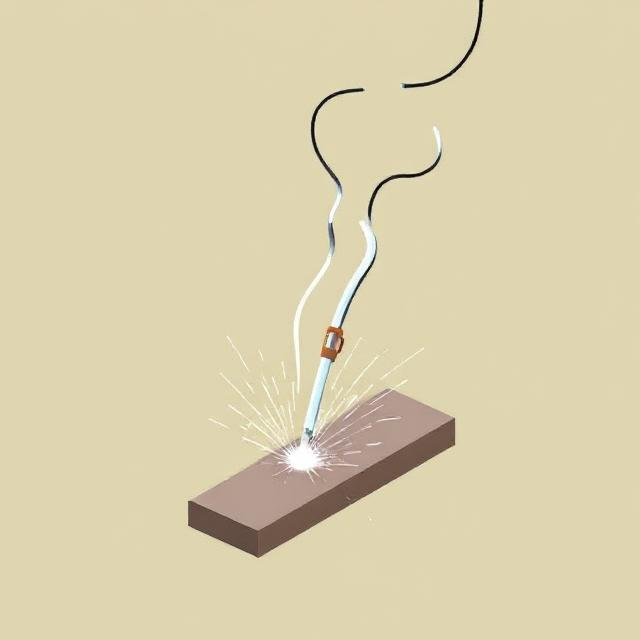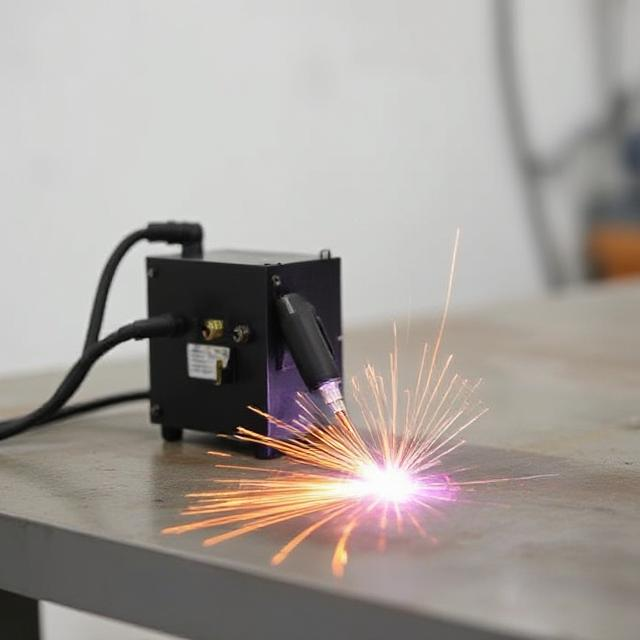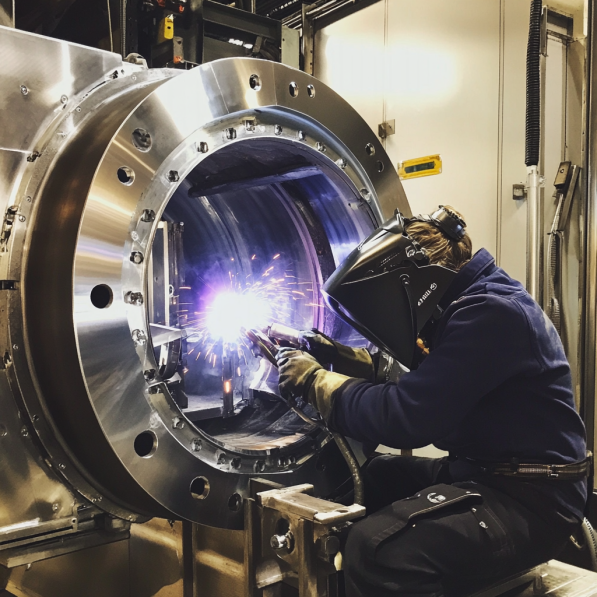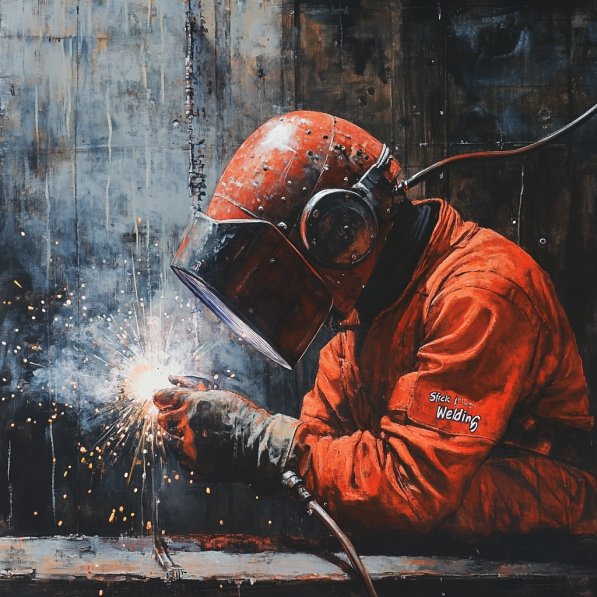
Name of Process
Shielded Metal Arc Welding (SMAW), commonly known as “Stick Welding.”
Key Features
- Uses a consumable electrode coated in flux to create the weld.
- Portable and versatile, ideal for outdoor or rugged environments.
- No external shielding gas required (flux creates protective slag).
- Works on a variety of metals, including steel, iron, and stainless steel.
Applications
- Construction (pipelines, structural steel).
- Repair and maintenance (farm equipment, machinery).
- Shipbuilding and heavy fabrication.
- DIY projects and home repairs.
Recommended Tools and Equipment
- SMAW welding machine (AC/DC).
- Electrodes (e.g., E6010, E7018).
- Welding helmet with auto-darkening lens.
- Gloves, apron, and protective clothing.
- Chipping hammer and wire brush for slag removal.
Setup and Settings
- Choose the correct electrode based on material and thickness.
- Set amperage according to electrode size and metal type.
- Ensure proper grounding of the workpiece.
- Adjust arc length for stability (typically 1/8 inch).
Technique Tips
- Maintain a consistent arc length.
- Use a drag (pull) technique for better control.
- Angle the electrode at 15-20 degrees for flat and horizontal welds.
- Clean the workpiece thoroughly before welding.
Common Challenges and Solutions
- Porosity: Caused by moisture or dirty surfaces. Dry electrodes and clean the metal.
- Slag Inclusion: Avoid by properly chipping and cleaning between passes.
- Arc Blow: Minimize by adjusting ground placement or using AC current.
Safety Considerations
- Wear proper PPE (helmet, gloves, flame-resistant clothing).
- Work in a well-ventilated area to avoid fumes.
- Beware of electric shock; inspect cables and connections.
- Keep a fire extinguisher nearby.
SMAW is a foundational welding process due to its simplicity, affordability, and versatility, making it essential for both professionals and hobbyists.
Who It’s For
- Beginners learning welding basics.
- Professionals in construction, repair, and fabrication.
- DIY enthusiasts and hobbyists.
Shielded Metal Arc Welding (SMAW) FAQ
-
1. What is SMAW welding, and how does it work?
Direct Response:
SMAW (Shielded Metal Arc Welding), or “stick welding,” is a manual welding process that uses a consumable electrode coated in flux to create an electric arc between the electrode and the workpiece, melting the metal and forming a weld.Detailed Explanation:
The flux coating on the electrode vaporizes, creating a shielding gas that protects the weld pool from contamination. As the electrode melts, it deposits filler metal into the joint. The flux also forms a slag layer that solidifies and must be chipped off after welding.Examples or Case Studies:
- Used in pipeline construction where portability is key.
- Commonly used for repairing heavy machinery in remote locations.
Additional Resources:
- Video tutorial: “How SMAW Welding Works.”
- Article: “The Science B
ehind Shielded Metal Arc Welding.”
2. What are the best electrodes for SMAW?
Direct Response:
The best electrode depends on the material and welding position. Common choices include E6010 for deep penetration, E6013 for general-purpose welding, and E7018 for strong, high-quality welds on steel.Detailed Explanation:
- E6010: Deep penetration, works well on dirty or rusty metal.
- E6013: Easy to use, good for beginners and thin metals.
- E7018: Low-hydrogen electrode, ideal for structural welding.
Examples or Case Studies:
- E6010 is often used in pipeline w
elding. - E7018 is preferred for building bridges and skyscrapers.
Additional Resources:
- Electrode selection chart.
- Guide: “Choosing the Right Electrode for Your Project.”
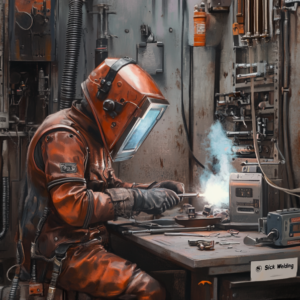
3. Can SMAW be used for thin metals?
Direct Response:
Yes, but it requires skill and the right electrode (e.g., E6013) to avoid burning through the metal.Detailed Explanation:
Thin metals are prone to warping and burn-through. Use lower amperage, smaller electrodes, and a fast travel speed to minimize heat input.
Examples or Case Studies:
- Repairing thin sheet metal on car bodies.
- Welding thin stainless steel for DIY projects.
Additional Resources:
- Video: “SMAW for Thin Metals: Tips and Techniques.”
- Article: “Welding Thin Metal Without Burn-Through.”
4. How do I prevent porosity in SMAW welds?
Direct Response:
Prevent porosity by using dry electrodes, cleaning the workpiece, and maintaining a stable arc length.Detailed Explanation:
Porosity is caused by contaminants like moisture, oil, or rust. Store electrodes in a dry place, clean the metal surface, and avoid excessive wind (if welding outdoors).
Examples or Case Studies:
- A construction team reduced porosity by switching to low-hydrogen electrodes (E7018) and storing them in a heated cabinet.
Additional Resources:
- Guide: “Common Weld Defects and How to Fix Them.”
- Video: “Preventing Porosity in SMAW Welds.”
5. What safety gear is required for SMAW?
Direct Response:
Essential safety gear includes a welding helmet, gloves, flame-resistant clothing, and safety boots.Detailed Explanation:
- Helmet: Protects eyes from UV/IR radiation.
- Gloves: Insulate again
st heat and electric shock. - Clothing: Prevents burns from sparks and molten metal.
- Boots: Protect feet from falling objects.
Examples or Case Studies:
- A welder avoided severe burns by wearing a flame-resistant jacket.
Additional Resources:
- Checklist: “Essential Welding Safety Gear.”
- Video: “Welding Safety Tips for Beginners.”
6. How do I choose the right amperage for SMAW?
Direct Response:
Amperage depends on electrode size and material thickness. Refer to the electrode manufacturer’s recommendations.Detailed Explanation:
- Smaller electrodes require lower amperage.
- Thicker materials need hi
gher amperage for proper penetration.
Examples or Case Studies:
- A beginner struggled with weak welds until they adjusted the amperage to match the electrode size.
Additional Resources:
- Amperage chart for common electrodes.
- Guide: “Setting Up Your SMAW Welder.”
7. What are the advantages of SMAW over other welding methods?
Direct Response:
SMAW is portable, affordable, and works well outdoors and on dirty or rusty metals.Detailed Explanation:
- No need for shielding gas, making it ideal for outdoor use.
- Equipment is cheaper and easier to maintain than MIG or TIG welders.
Examples or Case S
- SMAW is the go-to method for field repairs in agriculture and construction.
Additional Resources:
- Article: “SMAW vs. MIG vs. TIG: Which is Right for You?”
- Video: “Advantages of Stick Welding.”
8. How do I fix arc blow issues?
Direct Response:
Minimize arc blow by adjusting ground placement, using AC current, or changing your welding angle.Detailed Explanation:
Arc blow is caused by magnetic fields interfering with the arc. Solutions include:- Moving the ground clamp to a different location.
- Switching to AC if your welder supports it.
- Reducing amperage or using shorter electrodes.
Examples or Case Studies:
- A shipyard welder resolved arc blow by repositioning the ground clamp.
Additional Resources:
- Guide: “Troubleshooting Arc Blow in SMAW.”
- Video: “Fixing Arc Blow Issues.”
9. Can SMAW be used outdoors?
Direct Response:
Yes, SMAW is ideal for outdoor use because it doesn’t require shielding gas and can handle wind and dirt.Detailed Explanation:
The flux coating on the electrode provides its own shielding, making SMAW suitable for outdoor environments where wind would disperse shielding gas.Examples or Case Studies:
- SMAW is commonly used for pipeline welding in remote locations.
Additional Resources:
- Article: “Outdoor Welding Tips for SMAW.”
- Video: “Stick Welding in the Field.”
10. What are the most common mistakes beginners make with SMAW?
Direct Response:
Common mistakes inc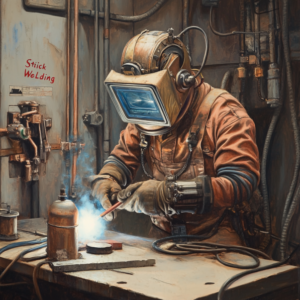
Detailed Explanation:
- Incorrect Amperage: Leads to weak or inconsistent welds.
- Poor Electrode A
ngle: Causes uneven bead appearance. - Dirty Workpiece: Results in porosity and weak welds.
Examples or Case Studies:
- A beginner improved their welds significantly after learning to clean the metal properly.
Additional Resources:
- Guide: “Top 10 SMAW Mistakes and How to Avoid Them.”
- Video: “Beginner Stick Welding Tips.”
- lude incorrect amperage settings, poor electrode angle, and failing to clean the workpiece.
- tudies:
